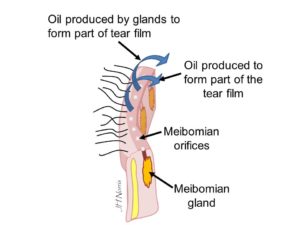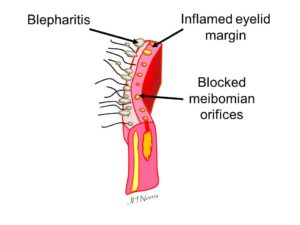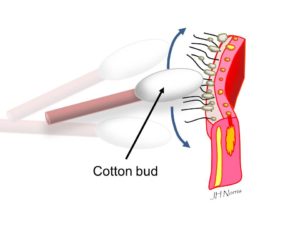Blepharitis is a very common condition which affects the eyelids. Blepharitis is often related to your skin type and results in inflammation of the eyelid margin. This can affect the roots of the eyelashes (anterior blepharitis) or the oil glands within the eyelids (posterior blepharitis).
Anterior blepharitis is associated with a bacterial infection of the eyelids. This cannot be caught from someone else who has it. The bacteria produce certain enzymes that result in irritation of eyelid and eye.
Posterior blepharitis is more often associated with skin conditions such as rosacea or seborrhoeic dermatitis which can affect the glands within the eyelid known as meibomian glands. Meibomian glands normally produce the oils which form part of your tear film.
Blepharitis can often give rise to irritation of the eyelids with secondary gritty, stinging or itchy sensation in the eye. Both the eyes and eyelids may appear red and inflamed. One can often see debris and crusting around the base of the eyelashes.
In some cases the surface of the eye will be affected. This can result in dryness and in some cases ulceration. This can particularly occur in the posterior type of blepharitis as the tear film is disrupted.
Conservative
There are several things that can be done at home to help manage blepharitis. Firstly, the eyelashes can be cleaned to remove the debris. This can be achieved by filling a cup with warm water and a couple of drops of baby shampoo. This creates a weak detergent that can be used to clean the eyelid using a cotton-tipped ear bud. You should aim to clean the lashes twice a day.
The meibomian glands can be encouraged to secrete their important oils by applying warm compresses twice daily with simultaneous eyelid massage. You can simply apply a warm face cloth to the closed eyes when in the bath or shower for a period of two minutes. Other options include re-usable packs that can be applied to the eyelids such as those made by the Eyebag Company (www.eyebagcompany.com).
Flaxseed oil can be tried as second-line option. Flaxseed oil is rich in omega-3 oil which is though to improve the quality of the tear film and potentially reduce inflammation of the eyelid.
Medical treatments
Ocular lubricants can be used to improve the surface of the eye. Mr Norris will discuss with you the best lubricants to use.
In some cases a steroid or antibiotic may be need to be applied to the eyelid (in the form of either a drop or an ointment) to reduce the inflammation. You shouldn’t use steroid ointments or drops without advice from an Ophthalmologist.
Oral antibiotics may also be required in severe cases for up to 2-3 months.
Author: Mr Jonathan Norris FRCOphth



